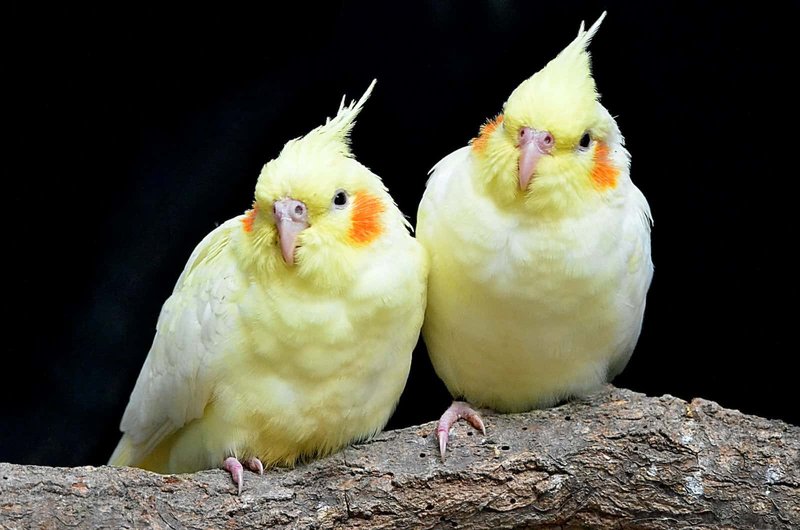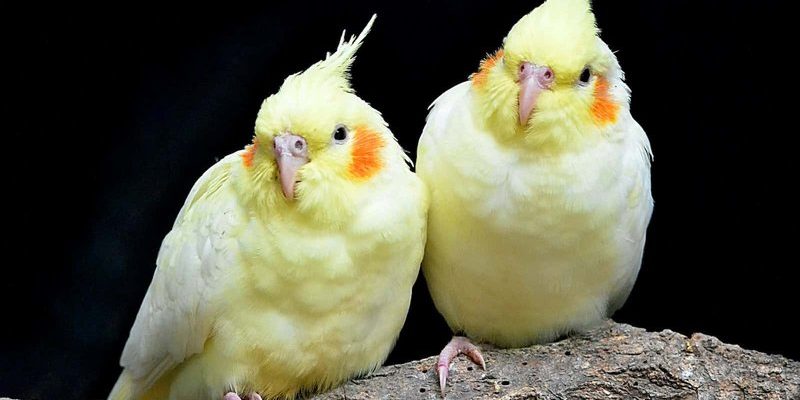
Just like how you and your friends might bond over shared experiences and conversations, cockatiels are social creatures that naturally seek out the company of others. Whether it’s another bird, a human, or even a favorite toy, understanding their social behavior is key to ensuring they lead a happy, fulfilling life. Let’s dive into the social dynamics of cockatiels and explore whether they really need a companion.
Understanding Cockatiel Social Behavior
Cockatiels are naturally social and highly interactive birds. In the wild, they live in flocks, which fosters a sense of community and belonging. Just think of a bustling city where everyone knows their neighbors, and you’ll get an idea of how cockatiels interact with each other. They communicate through whistles, chirps, and body language, forming strong bonds with their flockmates.
When cockatiels are kept alone, they can become lonely or bored. You might notice signs of distress, like excessive screeching or feather plucking. This is their way of expressing that they’re not quite happy. So, it’s essential to remember that a solitary cockatiel might be missing out on the joys of companionship that come so naturally to them.
Before deciding if your cockatiel needs a companion, consider their personality. Some cockatiels may thrive alone, enjoying the attention they receive from humans, while others may feel isolated without a fellow bird. Honestly, it’s all about figuring out what makes your feathered friend tick.
The Benefits of Having a Companion Cockatiel
Having a companion cockatiel can bring numerous benefits to both birds. For starters, they can engage in social interactions that mimic their natural behaviors. When two cockatiels are together, they can preen each other, share food, and even entertain each other, leading to reduced boredom and anxiety.
Let me explain this a bit further. Imagine a pair of cockatiels perched next to each other, chirping back and forth. Their conversations might revolve around singing, playing, or simply enjoying each other’s company. This dynamic can lead to happier, more active birds that display fewer behavioral issues.
Furthermore, having a companion can help your cockatiel develop better social skills. If you decide to introduce a second cockatiel, it’s essential to monitor their interactions initially. Pairing them gradually will help them establish a pecking order and build their bond together. The process might take time, so be patient.
Signs Your Cockatiel May Need a Companion
You might be wondering how to tell if your cockatiel truly needs a companion. There are several behavioral indicators to look out for. If your cockatiel is frequently vocalizing, especially during quiet hours, that could be a sign of loneliness. They might be calling out for companionship, just like you’d reach out to a friend when you’re feeling bored.
Other signs include:
- Destructive behavior: If your cockatiel is chewing or plucking its feathers, it could be a sign of stress or boredom.
- Excessive sleeping: A bored bird may spend more time sleeping than playing or interacting.
- Lack of interest: If your cockatiel shows little interest in toys or interacts less, they might be craving a friend.
If you observe these behaviors, it might be worth considering getting another cockatiel. They could provide the social interaction and stimulation your feathered buddy needs.
Choosing the Right Companion Cockatiel
If you decide to go ahead and find a companion, you’ll want to ensure the new addition is the right fit. Cockatiels come in various colors and patterns, but beyond their appearance, personality is crucial. You want to look for a bird that has a similar energy level and temperament to your existing cockatiel.
When introducing a new bird, consider adopting a similar age. A younger cockatiel may have more playful energy, while an older one might be more laid-back. Either way, each cockatiel has its unique quirks, so observing how they interact during the introduction phase is essential.
Make sure to set up a separate cage for the new bird at first, allowing for a gradual introduction. You could use a neutral area for them to get to know each other before fully integrating them into the same space. This will help reduce any territorial behaviors and encourage a smoother transition.
Alternatives to Getting a Second Cockatiel
You might not be ready to bring in a second cockatiel, and that’s perfectly okay! There are still ways to enrich your single cockatiel’s life. First, consider spending more time with your bird. Daily interactions through talking, training, or just hanging out can go a long way.
Another option is to provide a variety of stimulating toys. Puzzle toys, bells, and mirrors can keep your cockatiel engaged. Rotate these toys regularly to maintain your bird’s interest.
Additionally, you can introduce safe, supervised playdates with other pets, if applicable. Just like introducing a new friend, this requires careful observation to ensure that all parties feel comfortable and safe.
In essence, while a single cockatiel can live a happy life with proper attention and care, having a companion can greatly enhance their social experience. Just like we humans crave connection, these lively birds thrive when they have the company of another.
Whether you choose to adopt a second cockatiel or enrich your single bird’s environment, understanding their social behavior is key. Trust your instincts, stay observant, and create a loving space for your feathered friend. With the right companionship, you’ll find that your cockatiel can soar to even greater heights of happiness!

